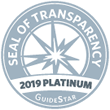Factors that proved important and were included in the scoring system were were inpatient hospital status at the time of the procedure, surgical time more than 4 hours, functional/independence loss, age >50 (with increased by decade of age after age 50), low blood count, use of blood thinners, recent weight loss, low serum albumin levels, increased white blood cells, baseline shortness of breath, male sex, obesity, current smoking and type 1 and 2 diabetes mellitus. The CESRI scoring system seemed to provide equal estimates regardless of type of neck surgical procedure or diagnosis and performed better than other generic risk calculators. However, statistically the performance of the model was only “fair”, with ‘fair’ sensitivity and specificity. Based on the CESRI point system, the probability of problems after surgery ranged from 0.010 if the CESRI score was ≤4 to 0.290 if the score was ≥50.
WHAT ARE THE IMPLICATIONS OF THIS STUDY?
The newly developed CESRI could aid physicians in counseling patients before thyroid and parathyroid surgery, and even to recommend treatment such as nutritional supplementation prior to surgery to some patients. However, given the low risk of problems and death of these procedures, the model only performs “fairly” and does not help predict the more common complications in endocrine surgery of hypocalcemia and nerve injury.
— Melanie Goldfarb, MD



